What to Look for When Buying a Litter Box for Rabbit
Discover what to consider when buying a rabbit litter box: size, material, and design tips to ensure your bunny's comfort and hygiene!
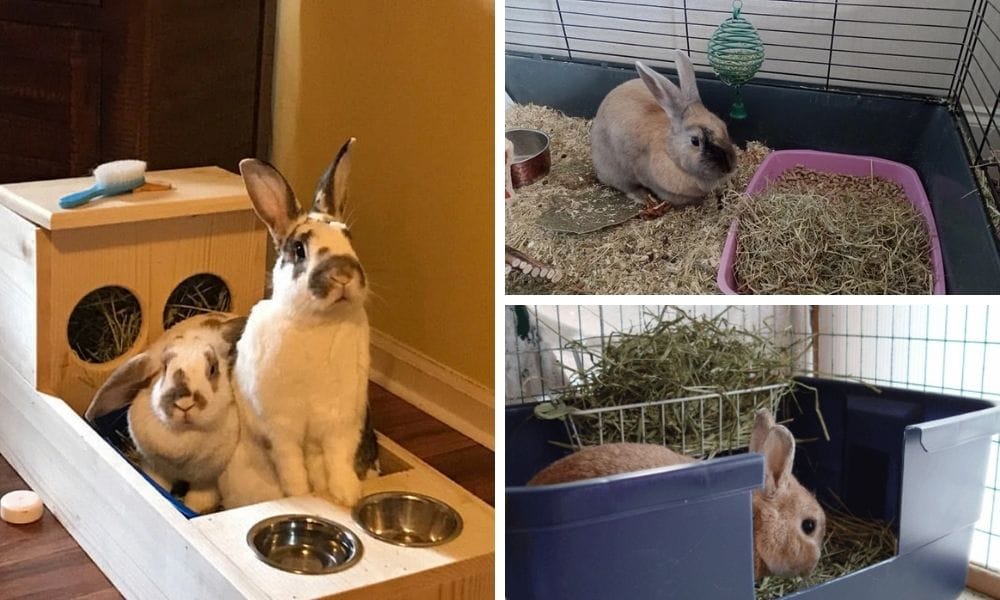
Choosing the right litter box for your rabbit isn’t just about picking any small animal litter tray off the shelf. It’s about finding the best litter box that meets your bunny’s needs for comfort and health, ensuring their well-being. This comprehensive guide will walk you through everything you need to know to make an informed decision.
Key Takeaways:
- Size Matters: Ensure the litter box is spacious enough for your rabbit to move around comfortably.
- Material Choices: Opt for materials that are easy to clean and safe for your rabbit.
- Location and Setup: Place the litter box in a quiet corner that your rabbit likes, making it inviting and accessible.
Understanding Rabbit Litter Box Basics
When you start your search for a rabbit litter box, it’s crucial to understand that rabbits have specific needs different from cats or other small animals. Unlike cat litter boxes, which are used strictly for bathroom purposes, rabbits often use their litter boxes for more than just bathroom needs; they can also serve as a place for them to eat and nap. Typical litter boxes that can be found in the 'Cat' section of any pet store. A bunny litter box should be a safe, comfortable place for your pet to do their business. Rabbits often choose a favorite corner in their enclosure to use as a bathroom, so observing your bunny’s habits can guide you in placing the litter box effectively.
Rabbits need a litter box that is easy to enter and exit. This means having at least one low side where your bunny can hop in without effort. Remember, if it’s not super easy for your rabbit to get in and out, they might not use it at all.
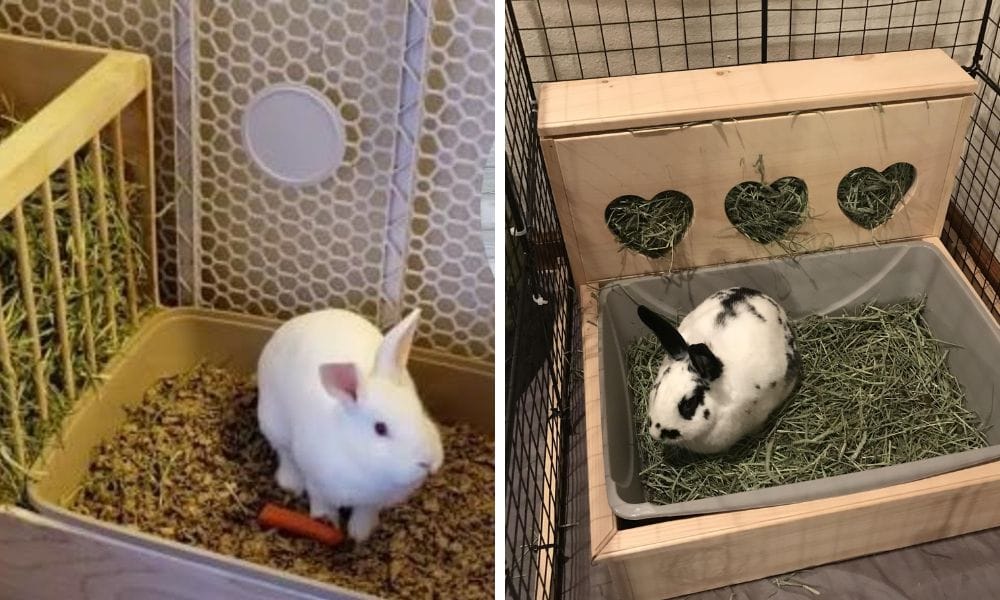
Size and Space Considerations
The size of the litter box is paramount. Rabbits need enough room to sit, turn around, and dig a little without feeling cramped. A common mistake bunny parents make is choosing a box that’s too small, leading to uncomfortable and messy situations. Ideally, the litter box should be at least four times the size of your rabbit.
Larger breeds will require even more space, so consider a jumbo-sized cat litter box or a shallow storage bin as alternatives. These options provide ample room for your rabbit to maneuver and are generally easy to clean.
Choosing the Right Material
The material of the litter box is another vital factor. Plastic is a popular choice due to its durability and ease of cleaning. Avoid materials that can absorb odors or are difficult to sanitize. Some bunny parents opt for a covered litter box to keep the litter contained and the surrounding area clean, but make sure the cover is high enough to not make your rabbit feel trapped.
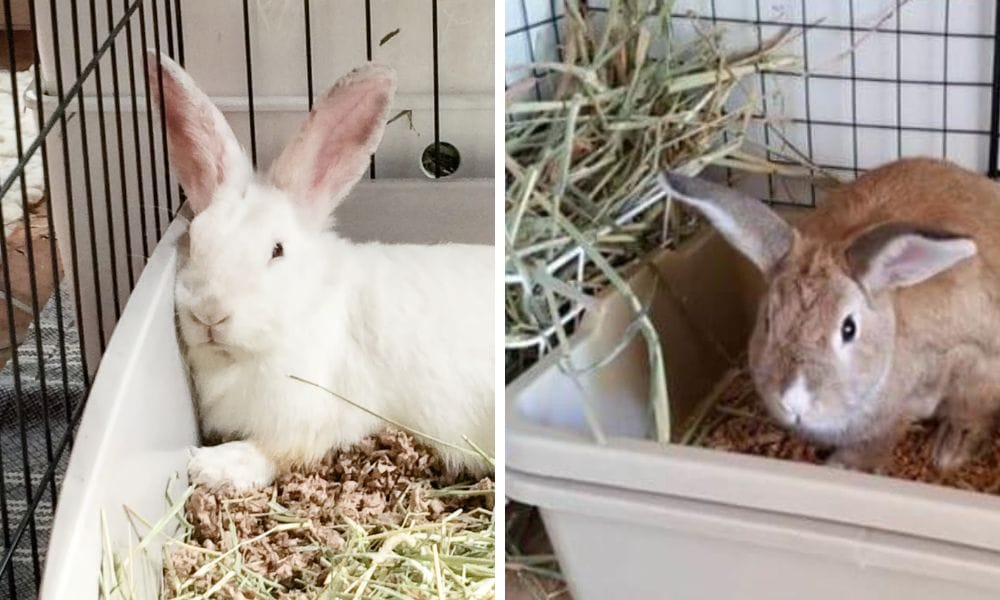
Best Litter Options
Selecting the appropriate litter is as crucial as the box itself. Paper pellets, wood pellets, or paper bedding are excellent choices as they are absorbent and safe if ingested in small amounts. Specifically, paper litter is gentle on rabbit's feet, making it a comfortable option, and when used in combination with pine pellets, it can enhance odor control while still being easy to clean. Steer clear of clumping cat litter or those with strong fragrances, as they can cause respiratory issues and other health problems in rabbits.
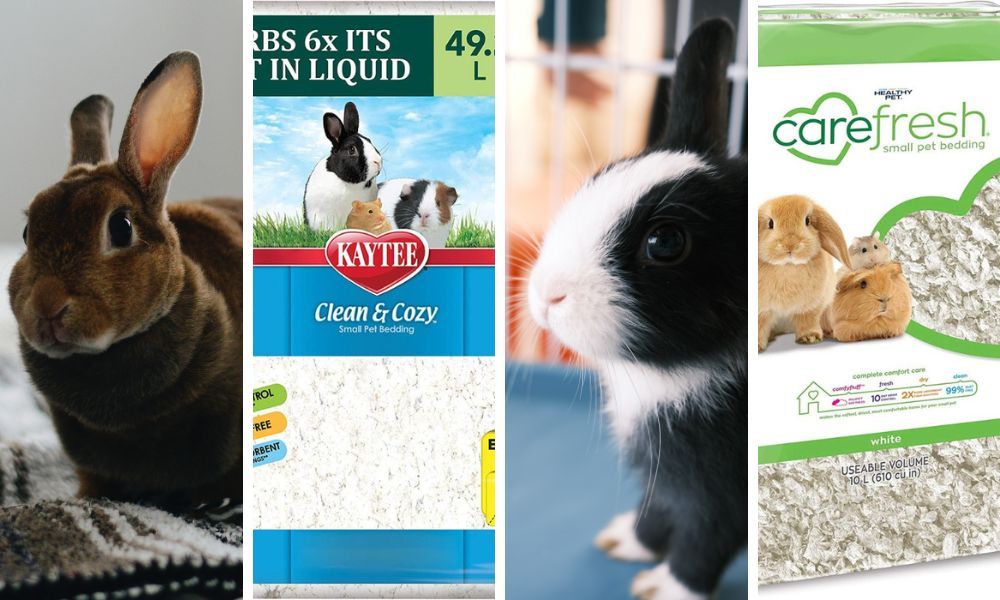
Innovative Litter Box Features for Enhanced Rabbit Care
When scouting for the perfect litter box for your rabbit, innovative features can make all the difference. Look for a litter box that includes a hay feeder attached to it. This design encourages your bunny to munch on hay while they use the box, which is great for their digestion and helps keep the litter area clean. Additionally, some litter boxes come with a built-in pee pad area that makes cleaning super easy. This feature helps absorb urine quickly and reduces the chances of spillage and odor, ensuring your rabbit's space stays fresh and inviting.
Moreover, consider litter boxes that are designed with high sides but have a low entry point. This structure helps contain litter and prevents it from being kicked out while still being accessible for smaller or older rabbits who might struggle with higher walls. These thoughtful features not only make life easier for the bunny parent but also ensure that your furry friend can maintain their natural behaviors and comfort. Always check if the litter box is easy to clean, as this will save you so much time and effort in maintenance, making the care routine less of a chore and more of a joy.
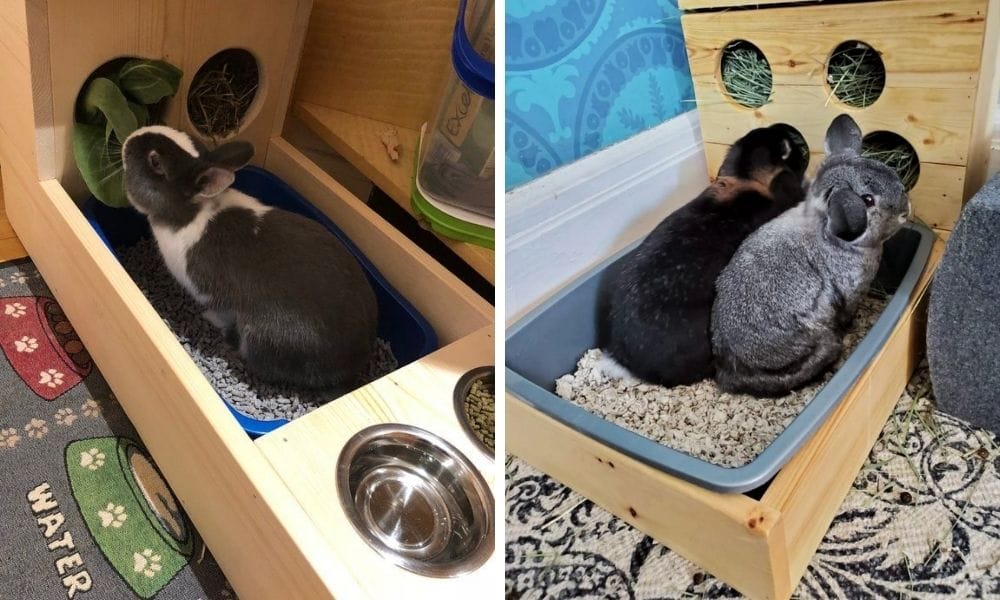
The Impact of Litter Box Design on Rabbit Hygiene
When selecting a litter box for your rabbit, the design can significantly influence hygiene and ease of cleaning. A covered litter box, for instance, might help contain odors and keep droppings out of sight, but it's crucial to ensure it still provides enough room for the rabbit to feel comfortable. The design should allow easy access for your bunny to hop in and out without struggle, which keeps the surrounding area clean as they won’t drag litter outside the box.
Moreover, the ease of cleaning the litter box itself affects how often it gets cleaned, which directly impacts your rabbit's health. A litter box that is super easy to clean encourages frequent maintenance, reducing the risk of bacterial growth and respiratory issues from accumulated waste. Look for designs with smooth surfaces and minimal corners where urine and feces can accumulate. A straightforward design not only simplifies your life but ensures a healthier environment for your furry friend.
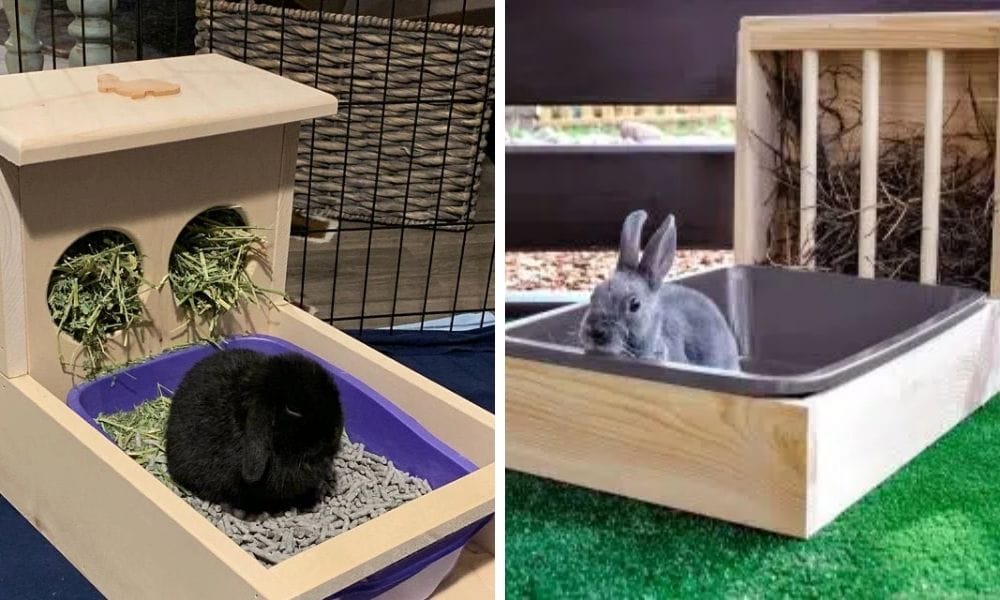
Exploring the Benefits of Covered Litter Boxes for Rabbits
Covered litter boxes, often more associated with cats, can be a game-changer for rabbit owners looking to maintain a cleaner and more odor-controlled environment. By containing the litter, these boxes minimize the spread of pellets and urine outside the box, which is especially beneficial if your bunny loves to dig and kick up their bedding. Additionally, the covered design helps trap odors inside, ensuring that your home stays fresher. However, it's crucial to choose a model with enough room to prevent your rabbit from feeling cramped, which could discourage its use.
While covered litter boxes offer significant advantages, it's important to monitor how your rabbit reacts to these enclosed spaces. Some rabbits may feel anxious or claustrophobic in a covered box, leading to avoidance and potential litter training setbacks. Observing your bunny's behavior during the initial introduction to a covered box will help you determine if it's the right fit. If your rabbit seems hesitant, try gradually acclimating them to the enclosure, or consider a box with a removable top to provide flexibility based on your rabbit's preferences.
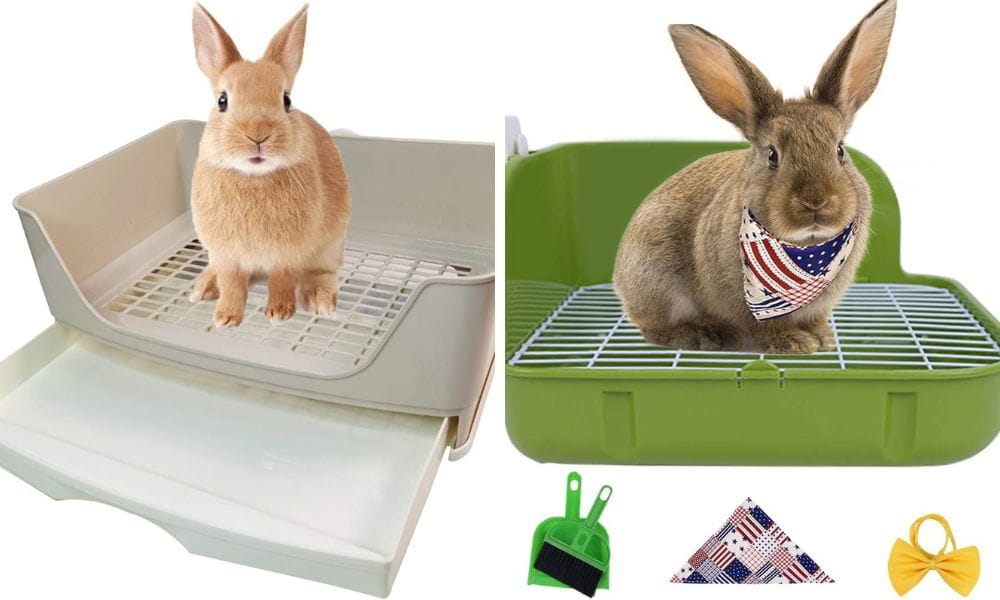
The Role of Litter Box Depth in Preventing Messes
When selecting a litter box for your rabbit, the depth of the box can play a pivotal role in maintaining cleanliness around the cage. A deeper litter box helps contain the litter, preventing your bunny from kicking it out while digging or moving around. This is especially important if your rabbit is particularly active or enjoys digging. A depth of at least 4-6 inches is recommended to effectively catch and contain litter, reducing the spread of droppings and urine outside the box, which can save you from constant cleaning.
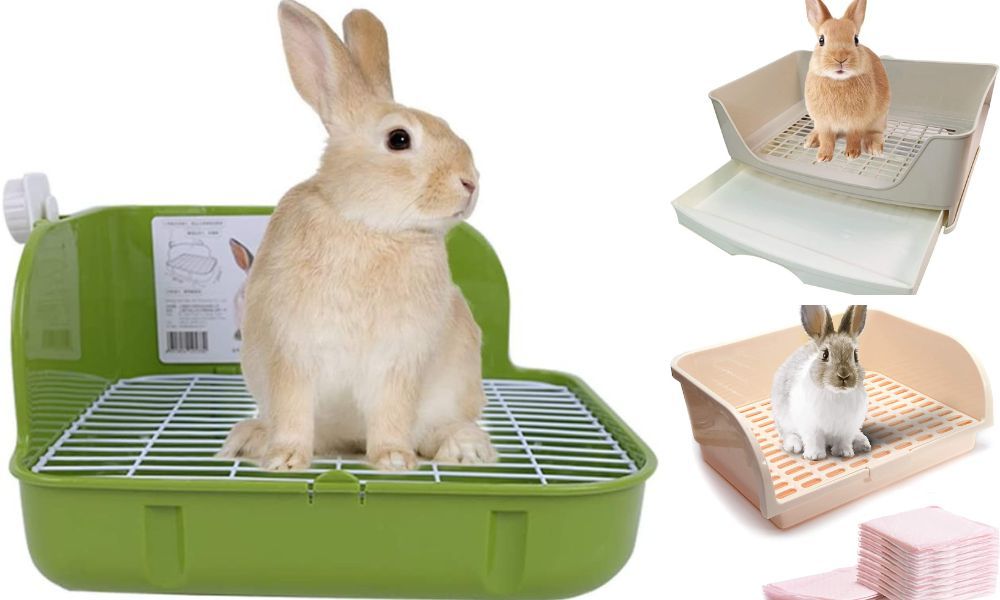
Moreover, a deeper litter box also aids in odor control. With more litter to bury their waste in, rabbits can cover their droppings and urine more effectively, which helps to minimize the smell. This is crucial in maintaining a fresh environment, particularly in indoor settings. Additionally, deeper boxes can hold more litter, which means they require less frequent changes. This not only makes maintenance easier but also proves cost-effective as it reduces the amount of litter you need to use over time.
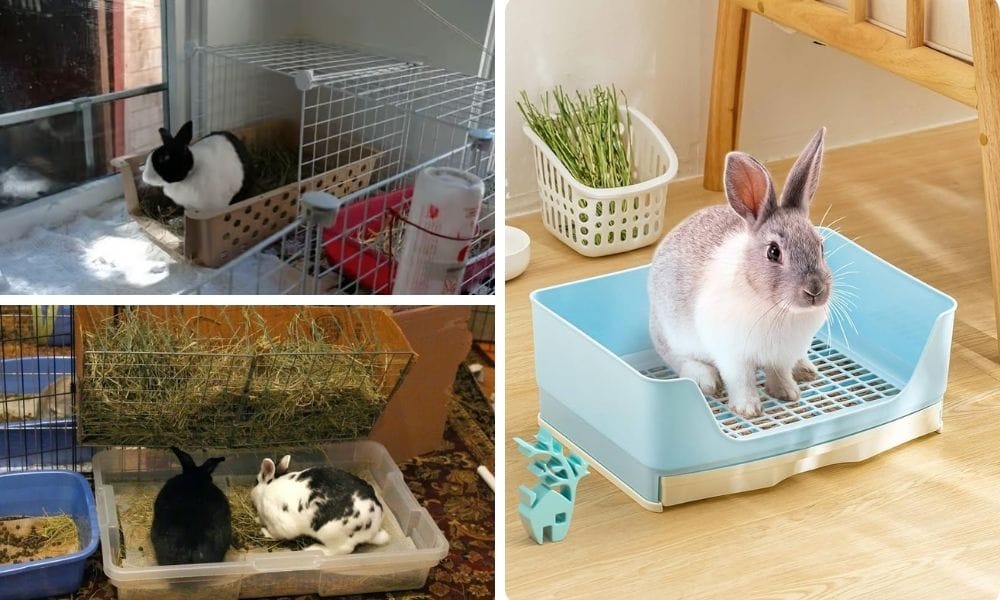
The Influence of Litter Box Positioning on Rabbit Stress Levels
The placement of the litter box within your rabbit's living space can significantly influence their stress levels and overall well-being. Rabbits are creatures of habit and prefer a quiet, secluded area for their bathroom needs. Positioning the litter box in a high-traffic area or near noisy household appliances can cause anxiety and discourage your rabbit from using the box. Ideally, the litter box should be placed in a corner that the rabbit has already chosen for relieving itself, as this leverages their natural instincts and makes litter training easier.
Furthermore, ensuring the litter box is easily accessible is crucial, particularly for older rabbits or those with mobility issues. Avoid placing the litter box in locations that require your rabbit to jump or climb, as this can be challenging and uncomfortable for them. A low-sided litter box placed in a familiar, easily reachable spot can significantly enhance your rabbit's comfort and encourage regular use, keeping both your bunny and their living environment clean and happy.
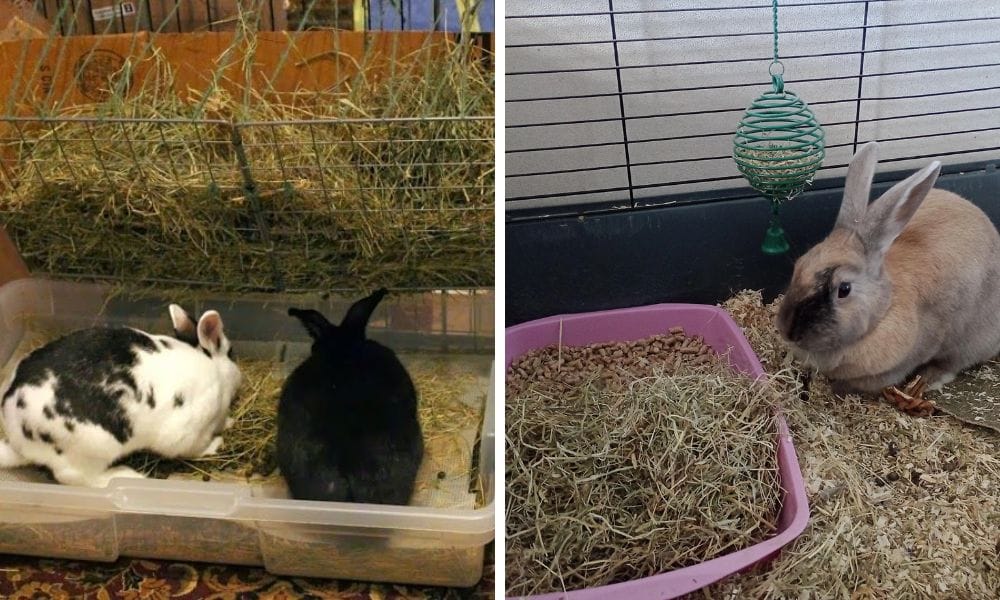
The Importance of Litter Box Accessibility for Elderly Rabbits
As rabbits age, their mobility can decrease, making it harder for them to hop into a high-sided litter box. For these senior bunnies, consider a litter box with low sides or a ramp to ensure they can easily access their designated potty area without strain. This small adjustment can significantly enhance their quality of life, reducing the risk of accidents outside the litter box and helping maintain their dignity as they navigate their golden years.
Furthermore, the placement of the litter box plays a crucial role in accessibility for elderly rabbits. It should be positioned in a favorite corner or area where your rabbit spends a lot of time to minimize the distance they need to travel. Additionally, placing multiple boxes around your home can be a thoughtful way to accommodate your aging bunny, ensuring they don't have to go too far to find a comfortable spot to relieve themselves. This consideration not only supports their physical needs but also caters to their emotional well-being, making their environment feel safe and accessible.
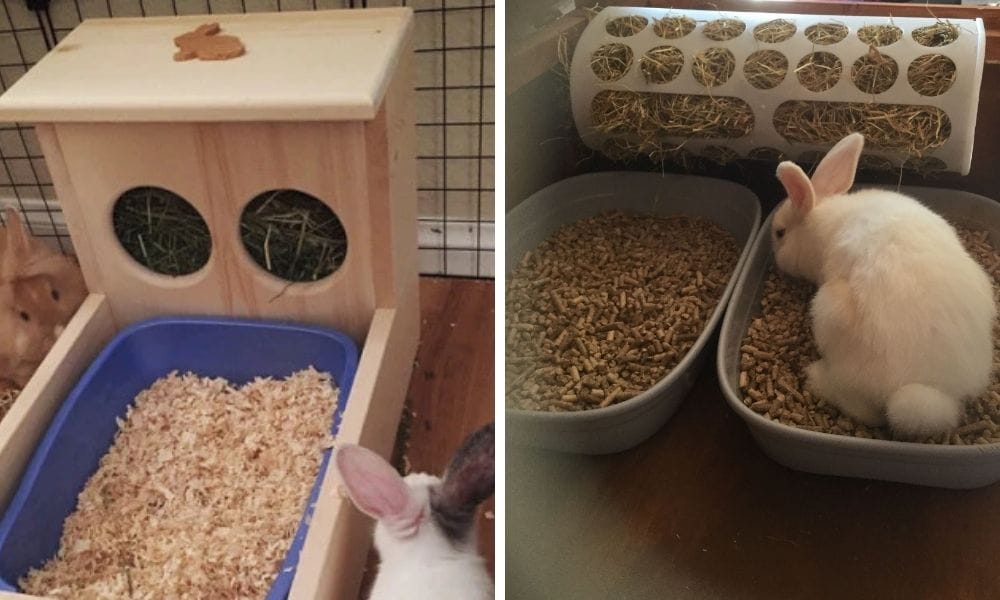
Behavioral Insights: Choosing the Right Location for Your Rabbit’s Litter Box
The placement of a litter box can deeply influence your rabbit's litter training success and overall comfort. Rabbits often choose a favorite corner to do their business; observing your bunny’s habits before setting up the litter box can lead to quicker and more successful potty training. Ideally, the litter box should be placed in a quiet, low-traffic area to make your rabbit feel secure enough to use it.
Conversely, if a litter box is placed in a noisy or highly active area, your rabbit might feel too anxious to use it, leading to accidents around the house. Additionally, consider the distance from their food and water, as rabbits often eat hay and poop at the same time. Placing the litter box too far from their feeding area could disrupt this natural routine, making litter training more challenging.
The Role of Litter Box Placement in Rabbit Behavior
The placement of a rabbit's litter box within their enclosure can significantly influence their litter habits and overall comfort. Rabbits tend to choose a favorite corner to do their business. Observing your rabbit's behavior can help you determine the best spot to place the litter box. Ideally, it should be in a quiet corner away from their feeding area to avoid contamination and to help create a clean and structured environment. This strategic placement helps in potty training your bunnies as they are likely to return to a spot where they feel secure and private.
Additionally, if you have multiple boxes and more than one rabbit, it's crucial to have enough room for each bunny to have their own designated litter area. This prevents territorial disputes and ensures that each rabbit feels comfortable and stress-free while doing their business. Remember, a well-placed litter box promotes good hygiene and helps prevent behavioral issues related to discomfort or territoriality. Always ensure the litter box is not just a necessity, but a well-integrated part of your rabbit's daily life, reflecting their natural instincts and needs.
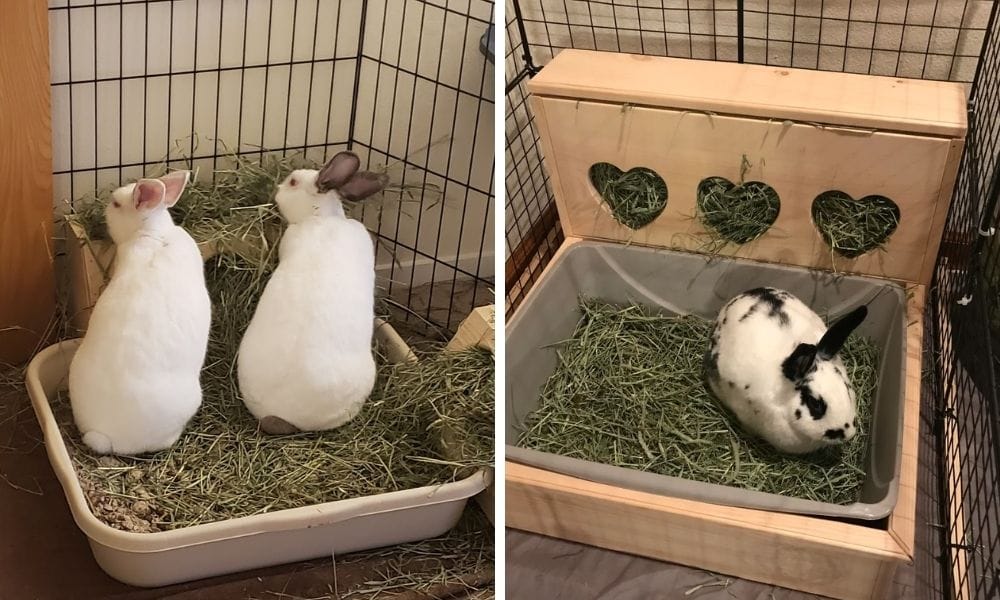
Litter Box Training Tips
Litter training a rabbit, similar to training a cat, involves teaching them to use a litter box as a designated area for urination and feces. This process requires patience and consistency. To effectively litter train your rabbit, place the litter box in the area of the cage where your rabbit has already chosen to go to the bathroom. Encourage use by placing a handful of hay in one corner of the box; rabbits love to eat hay while they do their business, making this an effective lure.
Cleaning and Maintenance
Keeping the litter box clean is essential for your rabbit's health. Clean the box daily by removing soiled litter and any poop. Perform a deep cleaning once a week by scrubbing the box with a mild, pet-safe detergent and rinsing it thoroughly. Always dry the litter box completely before adding fresh litter to prevent mold and bacteria growth.
Health Considerations
A clean, well-maintained litter box helps prevent urinary tract infections and other health issues. Pay attention to your rabbit’s bathroom habits and consult a vet if you notice any changes in frequency, consistency, or color of urine and feces. This could be a sign of health problems.
Placement in the Home
The placement of the litter box can greatly influence how consistently your rabbit uses it. Rabbits prefer quiet, low-traffic areas, so placing the litter box in a calm corner can make it more appealing. Ensure the area is free from drafts and not too close to their food or water. When looking for suitable litter boxes for these specific placements, consider visiting the 'Cat' section of pet stores, emphasizing the importance of choosing the right location both in the store when purchasing and at home.
Accessories and Enhancements
Consider accessories like a pee pad underneath the litter box for any misses or a mat to catch stray pellets. These additions help maintain cleanliness and make the area more comfortable for your rabbit to use.

Summary
Choosing the right litter box for your pet rabbits involves considering size, material, and placement, along with selecting suitable litter and maintaining cleanliness. By providing a comfortable and safe bathroom environment, you ensure your pet rabbits’ health and happiness.
FAQ
Q: How often should I change my rabbit's litter? A: Change the litter completely every week and scoop feces daily to maintain hygiene and odor control.
Q: Can I use cat litter for my rabbit? A: Avoid clumping and scented cat litters as they can be harmful to rabbits. Opt for paper-based or wood pellet litters designed for small animals.
Q: What should I do if my rabbit stops using the litter box? A: First, ensure the litter box is clean and accessible. If the problem persists, consult a veterinarian to rule out any health issues.

